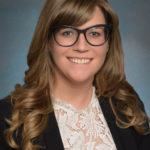COVID-19 Supplemental Paid Sick Leave to be Expanded Under California’s SB 95
The California Legislature just approved Senate Bill 95 which, once signed by Governor Gavin Newsom, will dramatically expand COVID-19 supplemental paid-sick leave.
The bill was sent to the governor on March 18, 2021 and is expected to be signed into law. Once effective, the law will apply retroactively to January 1, 2021, and expire on September 30, 2021. Employers who were not previously subject to last year’s version of supplemental sick leave may be subject to this iteration.
Last year, first through executive order and then legislation (Assembly Bill 1867), supplemental paid-sick leave was required for employees absent due to COVID-19 in certain industries, and/or hiring entities with more than 500 employees. The executive order covered certain food sector workers – and AB 1867 extended supplemental paid-sick leave to all hiring entities (regardless of industry) employing 500 or more employees in the United States, and persons employed as certain types of health care providers or emergency responders. That supplemental paid-sick leave expired December 31, 2020.
SB 95 not only continues but also expands on COVID-19 supplemental paid-sick leave. The bill applies to employers with more than 25 employees which means many more employers must now comply.
The bill will apply retroactively to January 1, 2021 “in order to protect the economic well-being of covered employees who took leave” after the expiration of AB 1867 and the federal Families First Coronavirus Response Act (which also expired Dec. 31, 2020).
Once signed by the governor, employers are required to provide COVID-19 supplemental paid-sick leave within 10 days after date of enactment, retroactive to January 1, 2021. This means that if any employee was previously absent for a specified COVID-19 reason, those employees are entitled to retroactive payments of COVID-19 supplemental paid-sick leave.
SB 95 In More Detail
Covered Employees. SB 95 defines a “covered employee” as an employee “unable to work or telework” because of a reason listed in the legislation. This new definition of “covered employee” means that even employees who regularly telework will benefit from this law, so long as they are unable to work due to one of the identified reasons.
Grounds for COVID-19 Supplemental Paid-Sick Leave. The bill identifies several reasons that will trigger supplemental paid-sick leave. This includes:
- The employee is subject to a quarantine or isolation order related to COVID-19.
- The employee has been advised by a health care provider to self-quarantine due to concerns related to COVID-19.
- The employee is attending an appointment to receive a COVID-19 vaccine.
- The employee is experiencing symptoms related to a COVID-19 vaccine that prevent the employee from being able to work or telework.
- The employee is experiencing symptoms of COVID-19 and seeking medical diagnosis.
- The employee is caring for a family member who must or has been advised to self-quarantine or isolate.
- The employee is caring for a child, whose school or place of care is closed or otherwise unavailable for reasons related to COVID-19 on the premises.
Amount of Leave. Generally, a covered employee is entitled up to 80 hours of COVID-19 supplemental paid leave if the employee works full-time or the employee has worked, on average, at least 40 hours per week in the two weeks preceding the date the covered employee took COVID-19 supplemental paid-sick leave.
If the covered employee is not full-time, the covered employee is entitled to the total number of hours the covered employee is normally scheduled to work over two weeks or, if that employee works a variable number of hours, the employee is entitled to the approximate two-week wage the employee would receive.
The law provides that the covered employee may determine how many hours of COVID-19 supplemental paid-sick leave to use, up to the total number of hours to which the covered employee is entitled.
It is important to note that the employer must make COVID-19 supplemental paid-sick leave available for use by the covered employee upon oral or written request by the covered employee.
Rate. The rate for nonexempt employees is calculated based on the highest of the following:
(i) same calculation as used in determining the “regular rate of pay” for that employee;
(ii) dividing the employee’s total wages, not including overtime, by the total hours worked in full period in the prior 90 days of employment;
(iii) state minimum wage; or
(iv) local minimum wage. For exempt employees, paid-sick leave is calculated in the same manner for other forms of paid leave time.
The cap for supplemental paid leave is $511 per day and $5,110 in the aggregate to a covered employee unless federal law changes, then the new federal dollar amounts shall apply. Any COVID-19 supplemental sick pay leave is in addition to any paid-sick leave that may be available to the covered employee. Thus, if a covered employee hits the maximum amounts (e.g., $511 per day/$5,110 in the aggregate), the employee may choose to use other available paid leave.
The employer cannot require a covered employee to use any other paid or unpaid leave, paid time off, or vacation time before invoking COVID-19 supplemental paid-sick leave or in lieu of COVID-19 supplemental paid-sick leave.
However, if a covered employee is excluded from the workplace due to COVID-19 exposure under the new California Division of Occupational Safety and Health (Cal-OSHA) COVID-19 Emergency Temporary Standards, an employer can require a covered employee to first exhaust their COVID-19 supplemental paid-sick leave to satisfy “continued earnings” under Cal-OSHA’s COVID-19 Emergency Temporary Standards.
Notice and Paystub Requirements. As with last year’s law, employers must give notice of employees’ rights to supplemental paid-sick leave. The Labor Commissioner is to make publicly available a model notice within seven days after SB 95 becomes law. Employers can provide electronic notice to employees who are not regularly in-person at the workplace.
COVID-19 supplemental paid-sick leave must also be identified on itemized wage statements, separately from regular paid-sick days. The employer may identify that paid-sick leave is calculated based on the employee’s variable work hours by indicating “variable” next to that calculation. The calculations must be provided to the employee upon request, or when the employee requests to use the leave.
Paystub compliance commences at the next full pay period after the bill is enacted.
Retroactivity. Since the bill is retroactive to January 1, 2021, an employer may be required to make a “retroactive payment” to any “covered employee” who took leave on or after January 1, 2021 but prior to enactment to the law. If an employer paid a covered employee based on qualified reasons related to COVID-19, and that employee received a greater amount than permitted under this law, the employer may count the hours as supplemental paid-sick leave under SB 95. However, this does not apply if the time off was granted under the State’s Healthy Workplaces, Healthy Families Act (Labor Code Section 246), or other specified time off (subdivision (e) of Section 248 or subdivision (f) of Section 248.1 (2020 COVID-19 supplemental paid-sick leave being paid out or commencing at the time of expiration on December 31, 2021)).
Request by Employee Required for Retroactive Payment. If leave was taken prior to enactment of this law, but the covered employee was not compensated for COVID-19 related sick leave, or the compensation was not equal to or greater than paid leave under this law, the covered employee may request, either orally or in writing, retroactive payment that provides such compensation consistent with this law. Upon such request, the employer must provide retroactive payment that provides for such compensation.
When providing retroactive payment, the number of hours of leave used for retroactive payment counts towards the total number of hours of COVID-19 supplemental paid-sick leave that the employer is required to provide to the covered employee under this law.
The retroactive payment must be paid on or before the payday for the next full pay period and the retroactive payment must be reflected on the written notice for the corresponding pay period.
Conclusion
SB 95 significantly expands coverage of COVID-19 supplemental paid-sick leave to employers that employ more than 25 employees. The bill is likely to become law very soon and will apply to “covered employees” for leave starting January 1, 2021. Once enacted, employers have limited time to comply. Employers should therefore promptly consult with legal counsel to determine whether they are subject to COVID-19 supplemental paid-sick leave and, if so, what must be done to bring the employer into compliance.
Sue M. Bendavid and Jessica W. Rosen are employment defense attorneys.
This information provides an overview of a specific developing situation. It is not intended to be, and should not be construed as, legal advice for any particular fact or situation.

